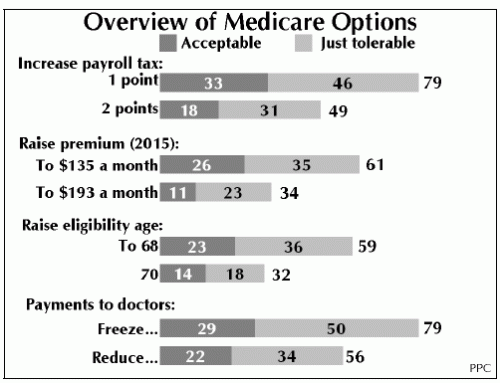Washington appears ready to attempt walking (jump start jobs/economy) and chewing gum (developing a long range plan for a sustainable budget) at the same time. Both are needed.
The Super Committee must identify $1.5 Trillion in deficit reduction over 10 years to avoid automatic budget cuts. Any plan addressing the long range deficit must focus on health policy since health care costs are the biggest long term budget problem.
Last week I suggested is a tax-based health care “fail safe” as one of several policy options to move toward a sustainable system. A fail safe is a mechanism that is triggered if expected savings from policy changes do not emerge. The President’s Fiscal Commission proposed a health care fail safe that required Congress to enact additional programmatic cuts if growth in total federal health spending was not constrained to GDP growth + 1 percentage point by 2020. Total federal spending included Medicare, Medicaid, ACA exchange subsidies, VA, and tax expenditures related to private health insurance. Everything.
A study by the University of Maryland School of Public Policy provides evidence that the public has more trouble making cuts and trade offs in health care as compared to other budgetary items. This is borne out in this table on Medicare options, showing nothing (tax increases, benefit cuts, pay docs less) had majority support as as acceptable way of addressing the deficit that is due to the Medicare program.
There was more consensus on how to address the budget deficit due to Social Security and the discretionary budget (incl. Defense), suggesting that the public views health care as different from other budget items. It is legitimate in a democracy for people to express such preferences. We can devise all sorts of policy efforts to slow health care inflation that could work. However, the biggest barrier to their doing so is cultural acceptability and not actually trying. For example, a recent RWJ brief outlines many ways to slow Medicare cost inflation via coverage decisions while potentially improving the quality of care, but they will of course all be controversial, and much easier to demagogue than to enact.
Instead of a fail safe that calls on Congress to enact unspecified cuts if health care cost inflation does not slow, I suggest a payroll tax imposed on the top half of the income distribution if total federal health care spending remains above GDP growth plus 1 percentage point at some future point. If policy changes designed to slow cost inflation are not tried or are insufficient, then a tax based fail safe would provide us with a clear choice. We can devise more/stronger policy approaches, or we can decide we don’t like any of them and pay higher taxes for the federal government’s share of health care.
update: this is one of several policy ideas from my book seeking a political compromise to move ahead on health reform. By “suggestion” I mean to signify this is not the only way to do it. The Fiscal Commission had some bipartisan support and has a fail safe. There is some evidence people have a harder time with trade offs in health care (though the table above is only for Medicare; the fail safe suggested by Fiscal Commission is all federal spending; the Univ. of Maryland study didn’t even discuss Medicaid). Hence, a tax based fail safe provides a choice: seek to reduce spending growth via a tax based fail safe or pay more. There are many types of tax that could provide such a choice.


